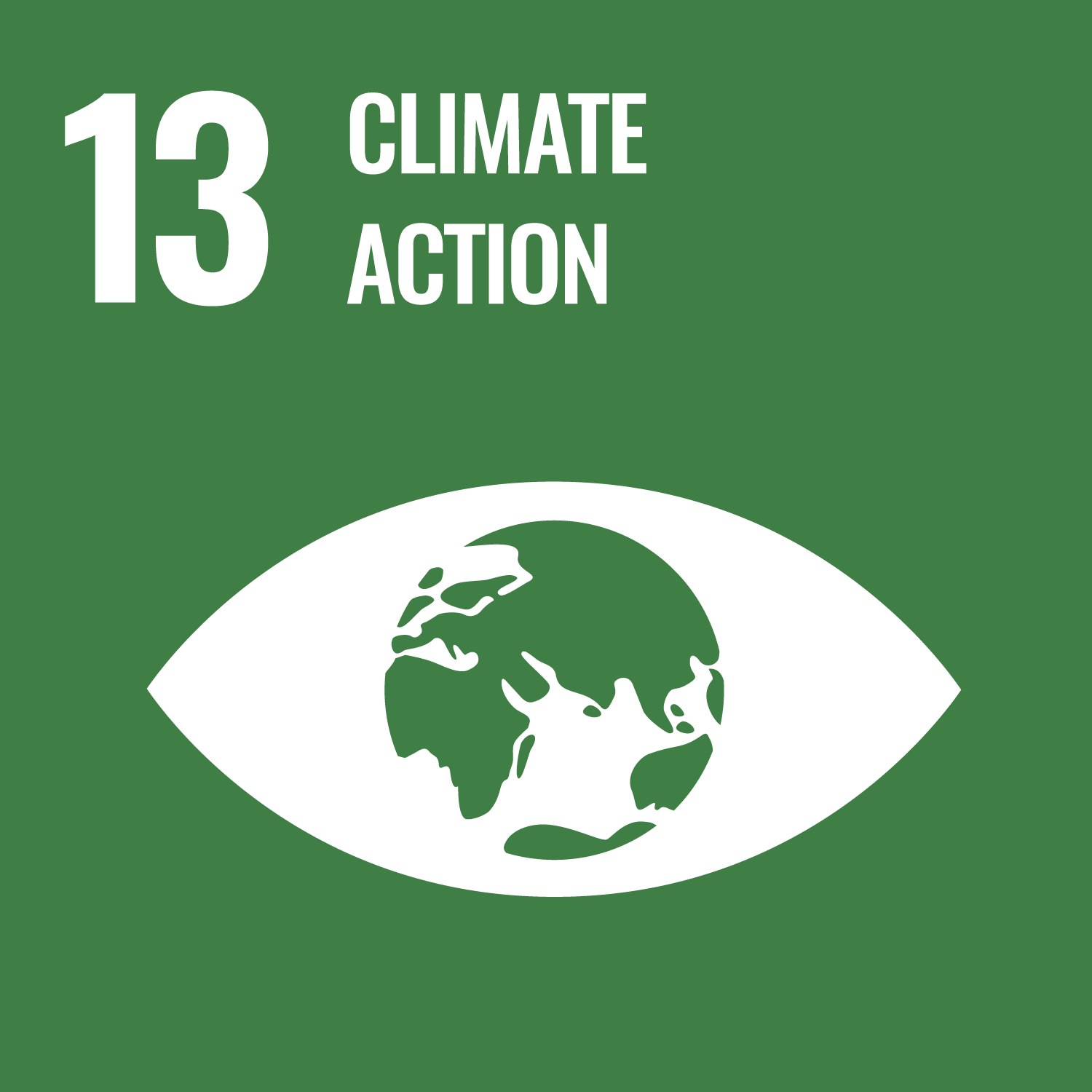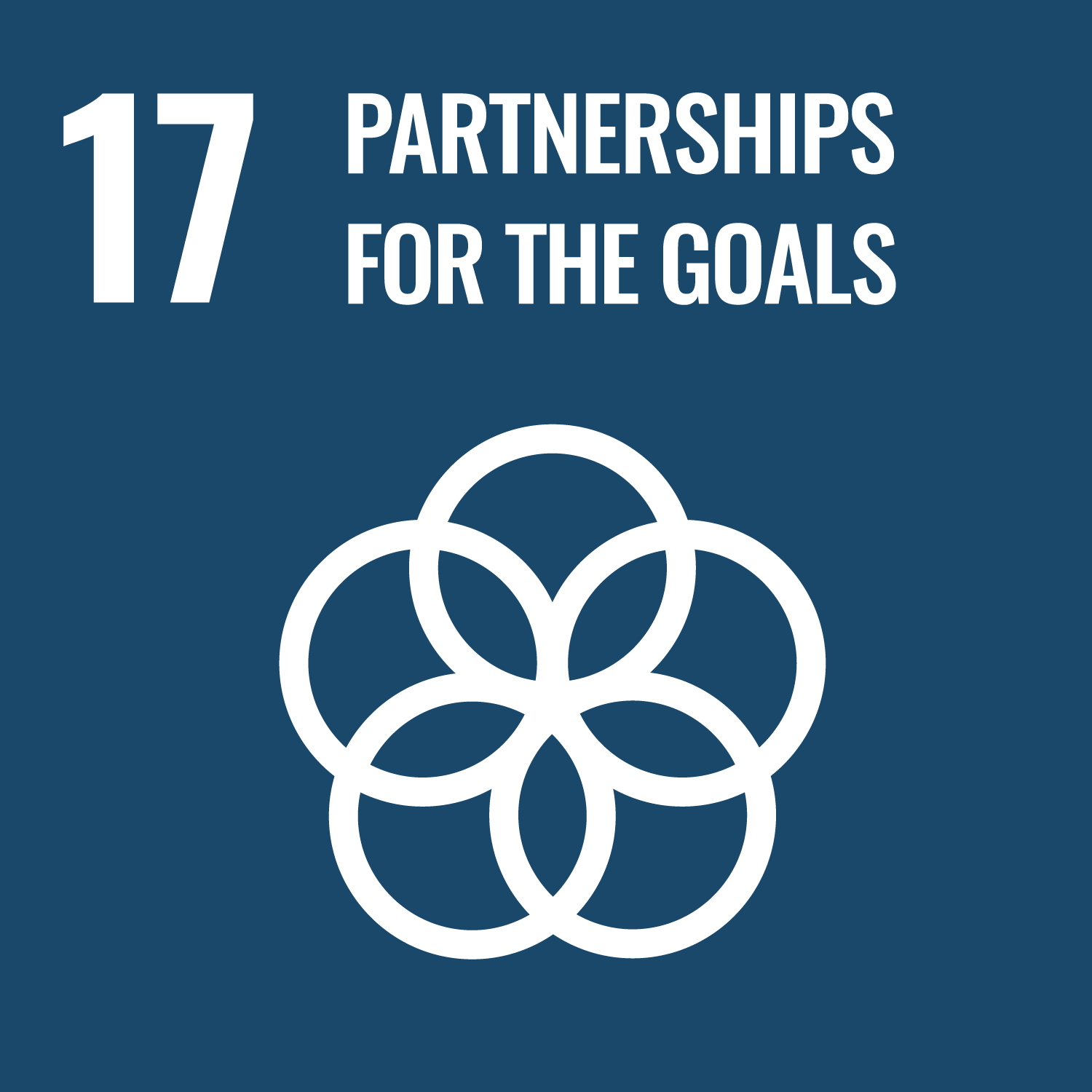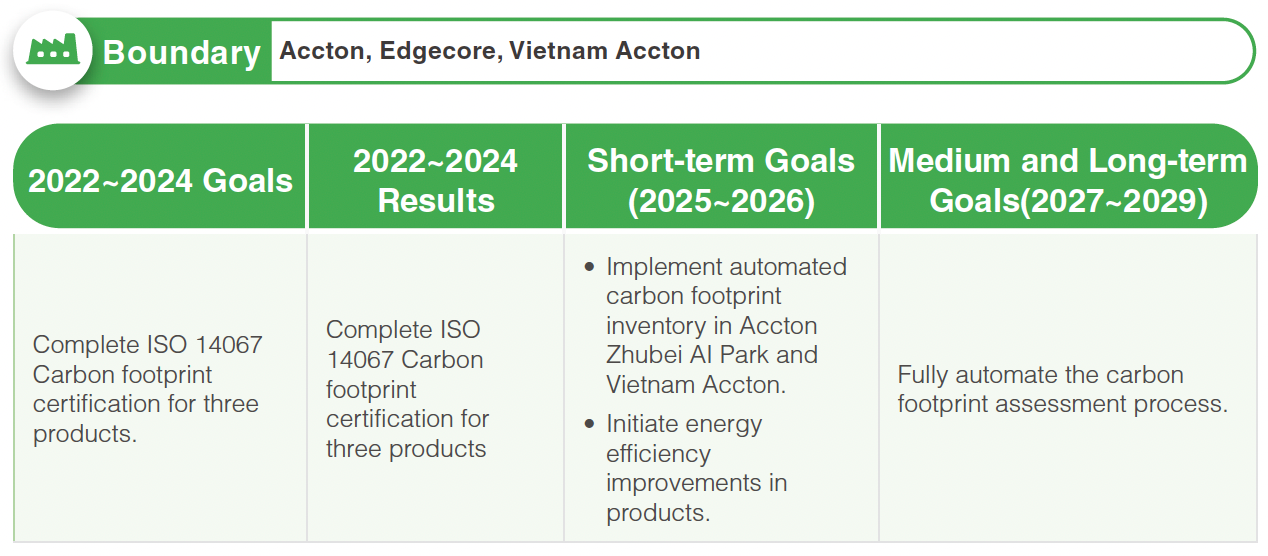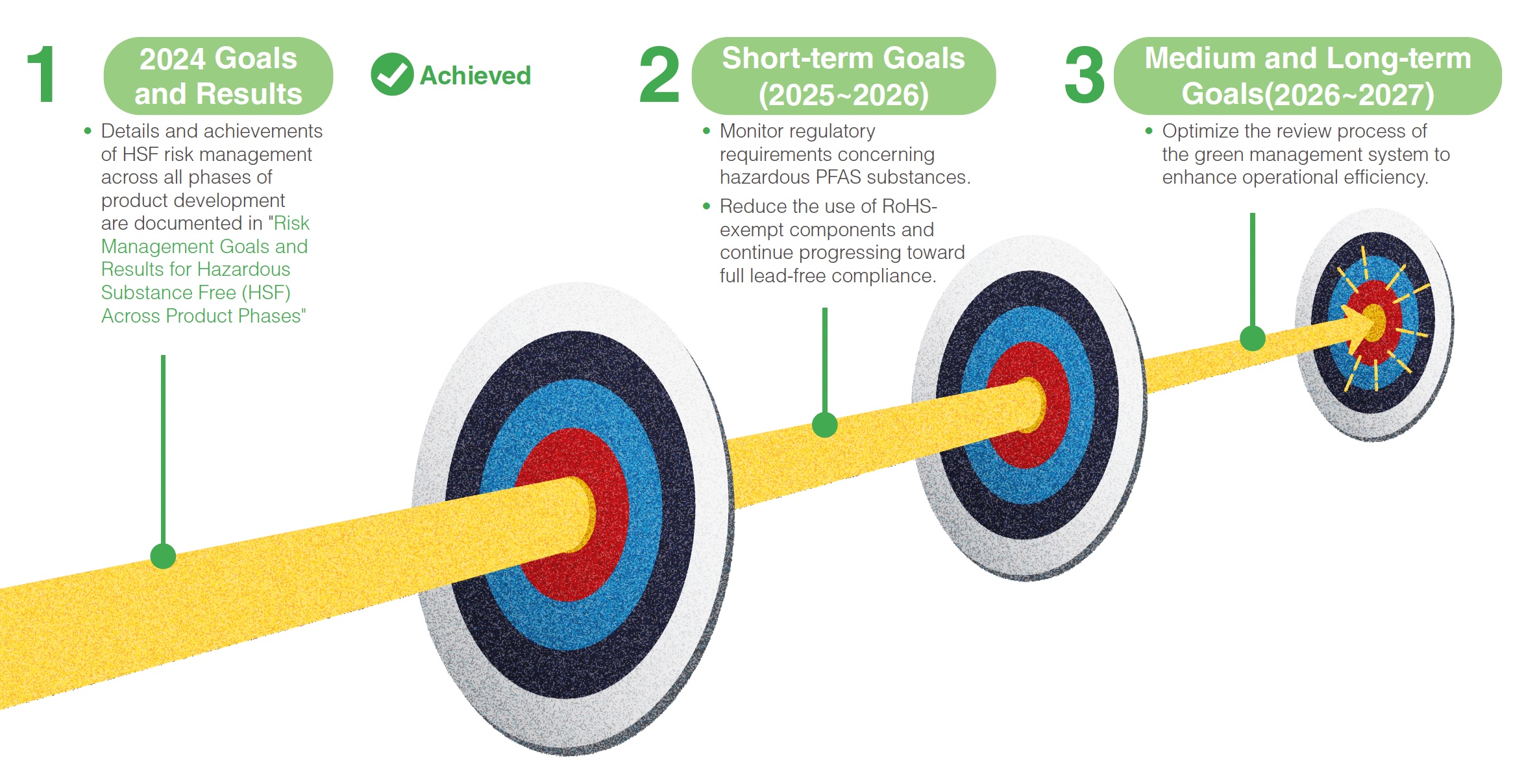Green Product Management
Commitment to Environmental Sustainability
To align with global trends and the urgent demand for low-carbon products from major industry players, Accton focuses on enhancing product competitiveness and raising environmental sustainability awareness. This involves conducting organizational carbon footprint assessments and emphasizing low-carbon product development. Starting in the second half of 2021, Accton initiated the assessment and verification of product carbon footprints. By the end of 2022-2023, Accton had successfully certified the first two products under ISO 14067 for carbon footprints and plans to systematically extend these assessments across all product lines to carry out carbon emissions reduction planning.
In the B2C (Business to Customer) calculation process, the usage phase of a product typically results in the highest carbon footprint. Therefore, Accton plans to continuously improve product energy efficiency to reduce carbon emissions. Once the automated product carbon footprint assessment system is fully implemented, it is expected to enable early calculation and consideration of new projects, making this indicator a key focus in product development.
Risk Management Goals and Results for Hazardous Substance Free (HSF) Across Product Phases
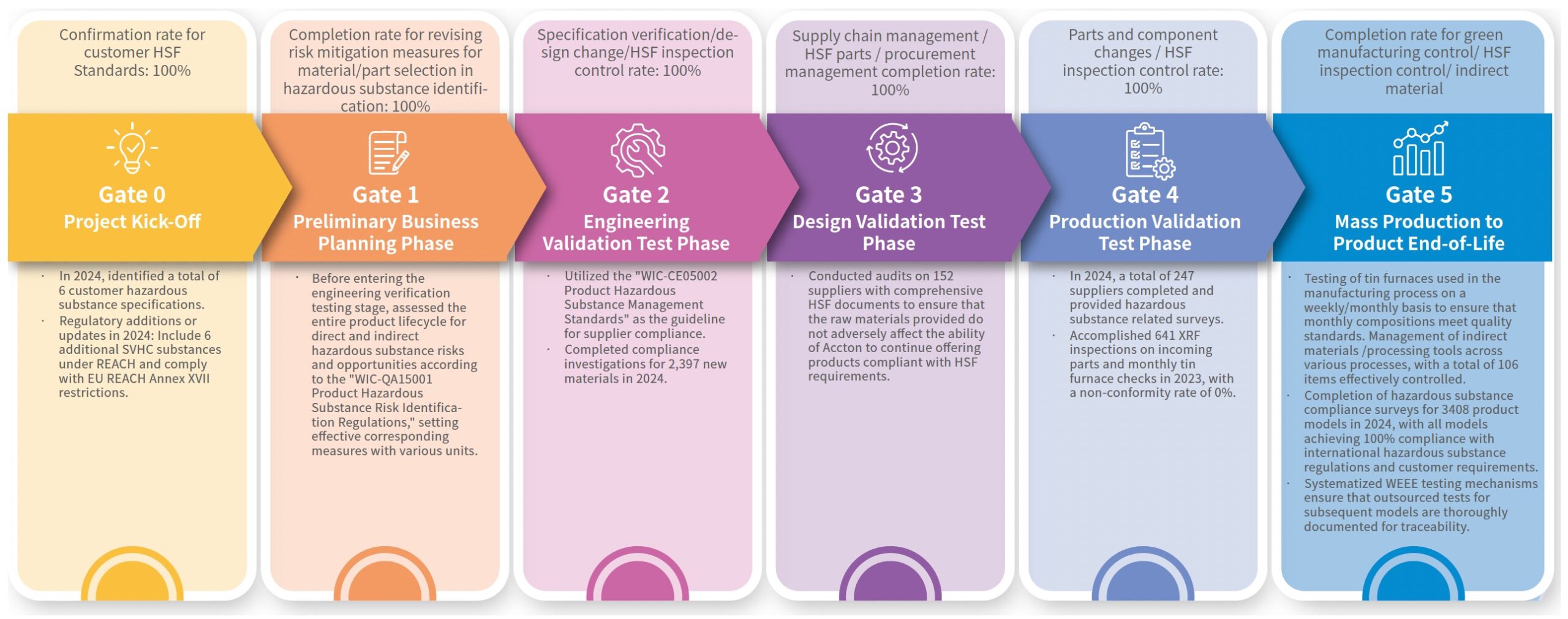
Sustainable Risk Management Effectiveness for Product Hazardous Substance Free (HSF)
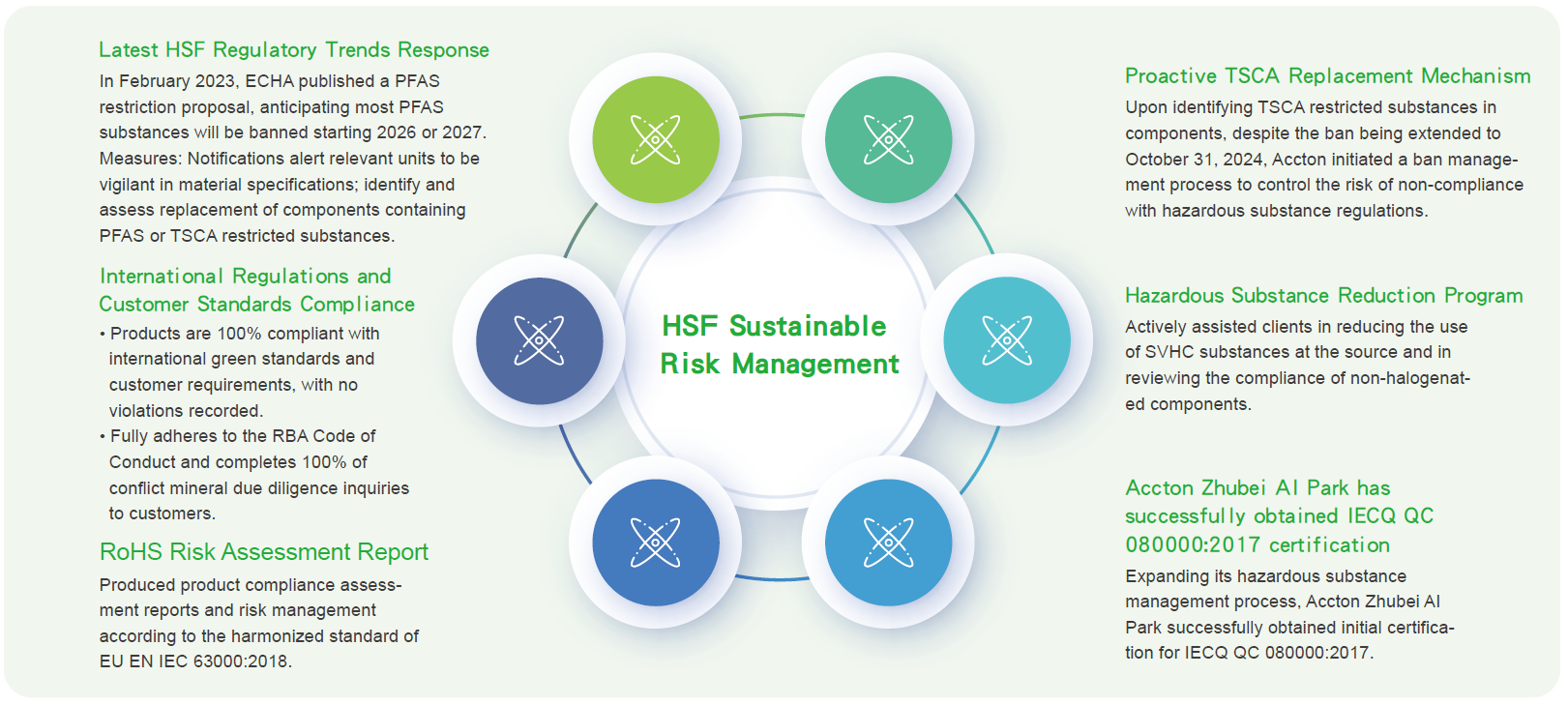
Green Product System
Accton aims to reduce the impact on the environment, fulfill corporate responsibilities for environmental sustainability, meet the expectations of stakeholders to protect the health and safety
of users and reduce the potential risks of products to environmental pollution. Accton also continues to comply with international regulatory requirements [RoHS (EU/China/Taiwan/Ukraine/
UAE…), EU REACH, EU Battery Directive, EU Packaging and Packaging Waste Directive, CA Pro 65, U.S. EPA TSCA……] and customer requirements, and keeps an eye on environmental trends.



